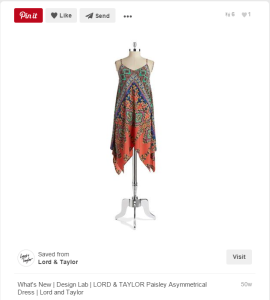Important Native Advertising News: FTC Sets Precedent
You might have missed a news story about Lord & Taylor, the Federal Trade Commission and a certain paisley dress that broke on March 15, 2016. You might have overlooked the story given Super Tuesday results, March madness and assorted hot button issues. But content marketers, social media influencers and brands need to pay close attention. The ground rules changed. Native ads and social media influencers are going to see a significant impact in the way they do business with brands going forward. Transparency is the new buzzword.
The saga began in March 2015. Lord & Taylor provided a paid article (or what’s called native advertising) to Nylon, a frothy fashion digital publication. The article, which did not look like an ad, touted a paisley dress from the fashion retailer’s new clothing line, Design Lab. In addition, the brand paid 50 social media influencers and gave them the dress, requiring the influencers to share a photo of themselves wearing the dress and using the hashtag #DesignLab and the Instagram handle @lordandtaylor in the captions. That, said the FTC, is deceptive. Lord & Taylor has settled the FTC charges, and will have to be transparent in all future relationships between the brand and influencers.
Why is this important? Social media influencers are the darlings of content marketing for brands. Influencers’ reach is what makes them players; the paisley dress weekend of posts reached an estimated 11.4 million viewers, generated more than 300,000 instances of engagement, and the dress sold out. To the FTC, that’s an ad campaign masquerading as coincidence. And Lord & Taylor is not alone in using social media influencers to spread a brand’s message.
In the future, when Lord & Taylor pays an influencer to tout one of their products, we’ll be seeing the hashtag #ad. That’s similar to the now-common phrase for book reviews: “I was provided a copy of the book in exchange for an honest review.” Yeah, right. We know the value of honest reviews, which is why authenticating reviewers, whether they’re on Yelp.com, TripAdvisor.com or Amazon.com is commonplace.
When there are billions at stake, like the $60 billion apparel and accessories retail e-commerce market, it’s no wonder brands are looking for an edge. But the FTC has put everyone on notice: Native advertising has rules to be followed. There’s a significant difference between an influencer promoting a product because they like it, and promoting a product because they’ve been paid.
Given the level of influence Instagram has on the buying public, this won’t be the last we hear about transparency and social media influencers.
Enjoyed this post? Read other articles by Kathleen.
Kathleen Gossman – Project Manager



